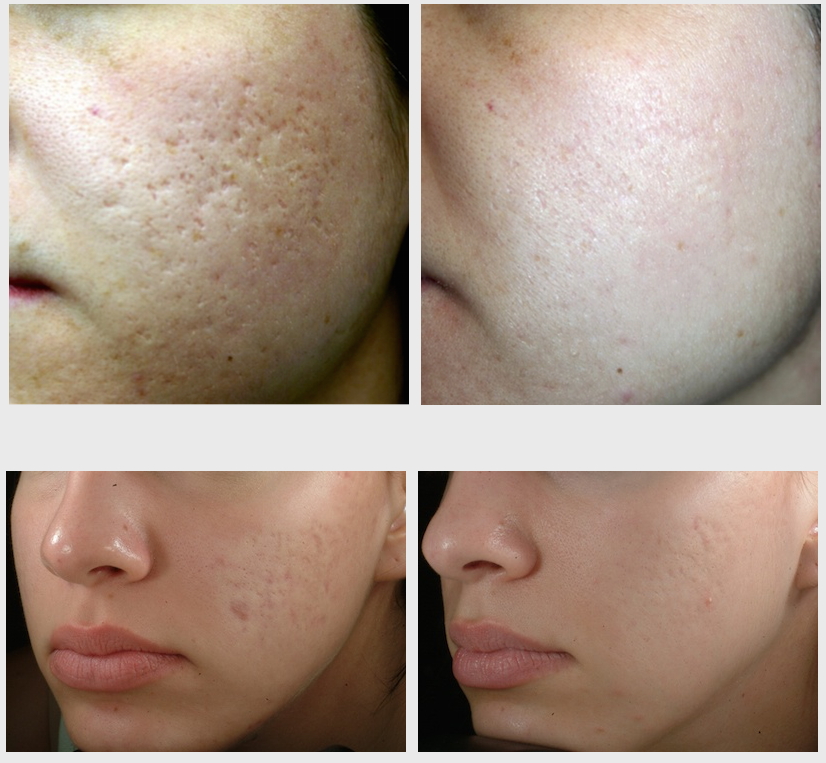Finest Acne Scars Treatment: Advanced Techniques for Smoother Skin
Wiki Article
Discovering Skin Conditions: Identifying and Dealing With Acne Scars for Healthier Skin
Acne marks stand for a considerable problem for individuals looking for to maintain healthy skin, as they can impact both look and self-worth. Understanding the various types of scars, from atrophic to hypertrophic, is essential for figuring out suitable treatment choices.Recognizing Acne Scars

The body's natural healing process can lead to either atrophic marks, which look like clinical depressions in the skin, or hypertrophic marks, which are elevated and arise from overflow of collagen. Furthermore, the mental toll of acne scars ought to not be undervalued; lots of people report feelings of embarrassment, anxiety, and reduced self-worth. This emotional burden can impact social communications and total lifestyle.
Addressing acne marks calls for a comprehensive understanding of their development and influence. Awareness of the potential for long-term effects associated with neglected scars can inspire individuals to look for appropriate treatments. Early intervention and reliable administration strategies can significantly enhance skin appearance and improve mental strength, emphasizing the relevance of comprehending the complexities bordering acne marks.
Sorts Of Acne Scars
Acne scars can be classified into distinct types, each displaying special features and requiring particular therapy methods. skin rejuvenation treatments. The main kinds of acne marks consist of atrophic, hypertrophic, and keloid marks
Hypertrophic scars, in contrast, are increased over the skin level and are the outcome of too much collagen manufacturing throughout the recovery process. They normally stay within the borders of the initial acne lesion. Keloid scars are comparable yet extend past the initial injury website, creating bigger, elevated locations that can be scratchy or painful.
Understanding these kinds of marks is important for selecting suitable treatment alternatives. Various marks may respond far better to certain therapies, such as laser treatments, fillers, or medical treatments, emphasizing the importance of a customized approach to acne mark administration.
Recognizing Your Marks
Acne scars usually drop into 2 groups: atrophic and hypertrophic marks. These can further be classified into ice-pick marks, boxcar scars, and rolling scars, each displaying distinct features and requiring various methods for assessment.Hypertrophic scars, on the other hand, are increased and take place as a result of too much collagen production during the recovery procedure. Acknowledging the particular features of your scars-- such as structure, width, and depth-- is important for proper recognition (acne scars treatment). Additionally, consider the circulation of scars across your skin, as this can suggest the extent and period of the acne problem
Involving with a skin doctor can offer important understandings right into the nature of your marks, helping in the differentiation in between various kinds. An extensive understanding of your marks will ultimately lead to a much more customized and reliable therapy strategy, ensuring a more clear and much healthier skin.
Therapy Alternatives Offered
Recognizing the certain kind of acne marks existing on your skin prepares for checking out efficient treatment alternatives. Usual kinds of acne marks include atrophic (depressed), hypertrophic (elevated), and post-inflammatory erythema.For atrophic marks, alternatives such as chemical peels, microneedling, and laser resurfacing are commonly pop over to these guys utilized. Chemical peels off utilize acids to eliminate the outer layer of skin, advertising brand-new cell growth.
Hypertrophic marks can be treated with corticosteroid injections to flatten the scar or laser therapy to lower soreness and enhance look. Silicone gel sheets and pressure dressings might likewise assist in taking care of raised marks.
In addition, facial fillers can temporarily fill out depressions from atrophic marks, while surgical excision may be appropriate for severe instances. Each treatment alternative has its factors to consider and advantages, making it vital to seek advice from with a skin doctor. They can provide customized referrals based upon the kind and intensity of your marks, along with your skin kind and general health.
Tips for Prevention
Efficient prevention approaches can substantially decrease the chance of establishing acne marks. Utilizing non-comedogenic items assists protect against stopped up pores, which can exacerbate acne.
Avoiding the impulse to choose or stand out acne lesions is essential, as this can result in deeper skin damages and raise the risk of scarring. Rather, take into consideration making use of a cold compress or non-prescription therapies to lower swelling and inflammation.
Sunlight defense is another essential element of prevention; ultraviolet (UV) rays can dim scars and prevent the healing procedure. Using a broad-spectrum sunscreen with a minimum of SPF 30 daily can safeguard the skin and advertise even healing.
Lastly, maintaining a balanced diet plan rich in antioxidants, minerals, and vitamins supports skin health and recovery. Staying hydrated and taking care of anxiety degrees can additionally play a substantial function in decreasing acne flare-ups. By implementing these strategies, people can substantially decrease their opportunities of creating acne marks.
Conclusion
In final thought, understanding and determining acne scars is vital for reliable therapy and attaining much healthier skin. Different kinds of acne marks, consisting of hypertrophic and atrophic scars, necessitate details interventions customized to specific needs. Therapy choices array from chemical peels and microneedling to corticosteroid shots, emphasizing the importance of consulting a skin doctor. Additionally, adopting a gentle skincare routine and safeguarding the skin from UV direct exposure can considerably contribute to the avoidance of further scarring and total skin health and wellness.The body's natural recovery process can result in either atrophic scars, which appear as clinical depressions in the skin, or hypertrophic marks, which are raised and result from overflow of collagen. They are further split into three subtypes: ice pick scars, boxcar marks, and rolling scars. Acne scars generally drop into this page 2 categories: atrophic and hypertrophic marks. These can better be identified right into ice-pick marks, boxcar marks, article source and rolling scars, each displaying distinct attributes and calling for various strategies for assessment.
Numerous kinds of acne marks, including atrophic and hypertrophic scars, require specific interventions customized to private needs.
Report this wiki page